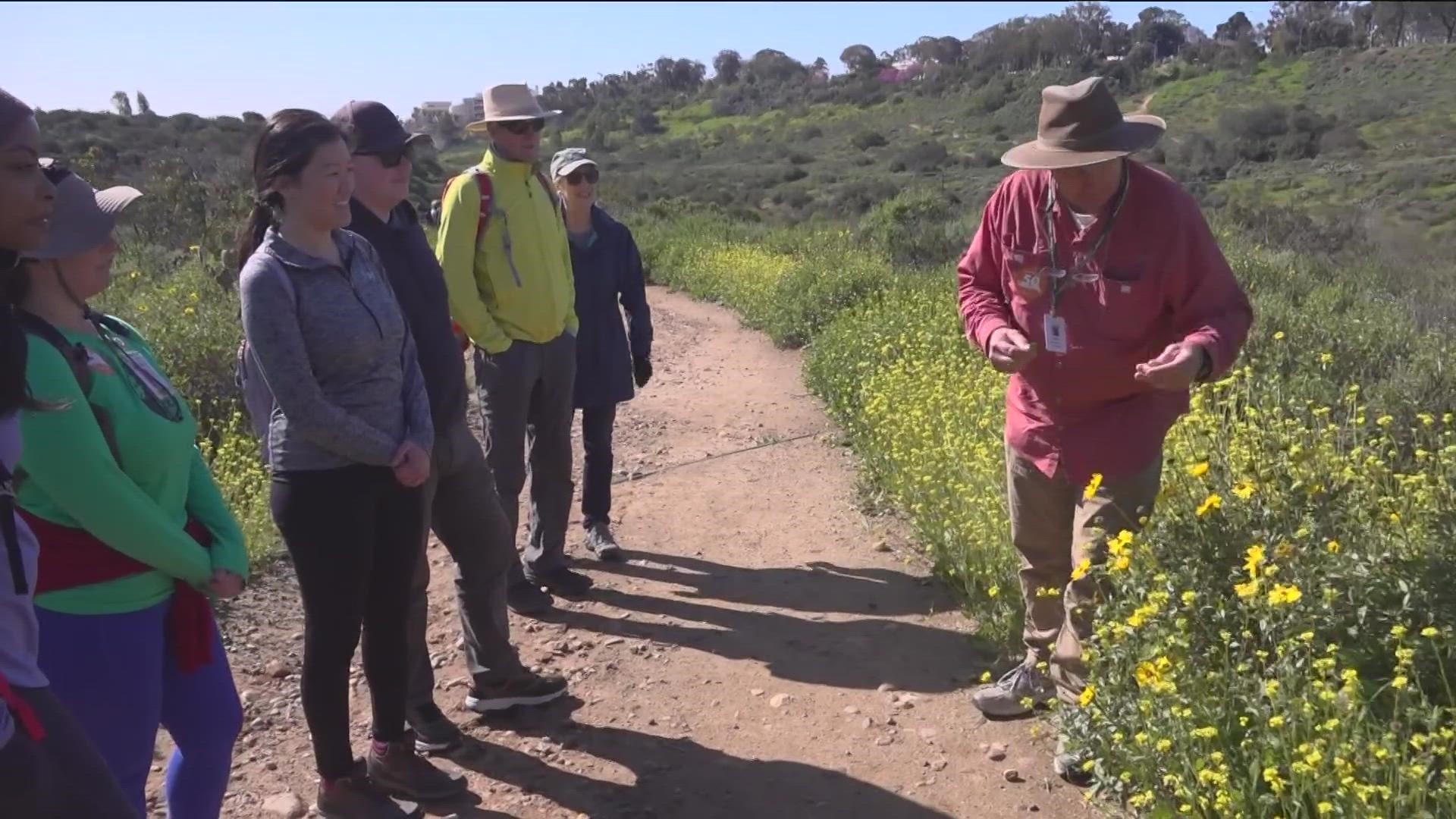SAN DIEGO — Many trails are carved in the landscape of San Diego. Each location has its beauty and history. One particular canyon trail in Balboa Park was the start of a commitment to educating the public about nature through direct contact. Let's hike with the Canyoneers as they celebrate the 50th anniversary of their program.
"San Diego is so unique. We have many natural sources because we have so many canyons. It is hard to develop into; so many people have these cool hikes in their backyards that they don't know about. Coming out to the Canyoneers, you get to learn where those are and have a good time," said Samantha Barlin, a Canyoneers volunteer.
On this clear day along the trail, the Short Pod Mustard Plant lining the entrance to the trail where as bright as the Sun.
"So, we'll see a lot of these varieties. You can distinguish them by the leaves. They look much like the mustard you can buy in the grocery store," explained Kirby Urtiaga, a Canyoneers volunteer.
This hike is to celebrate the program's anniversary that started here in Florida Canyon, located in Balboa Park. The program was founded in 1973 by Helen Chamlee, a Former Associate Curator at The San Diego Natural History Museum. Helen advocated preserving this natural space to prevent a portion of it from being turned into expanded parking for the Zoo and Naval hospital.
"We have a very unique environment in San Diego, and so the Canyoneers help to interrupt that and make people understand how it works. How the plants work, the geology, the climate, all living and non-living work together, and how it is important to preserve it. And this canyon is one example of that," said Enrique Medina, a Canyoneers volunteer.
"It is one of the most endangered habitats, what we call a coastal sage scrub, and this would have been a building if Helen Chamlee had not protected it," continued Medina.
"And guess what bird would be attracted to this? Hummingbird. Yeah, many birds are attracted to red," explained Dale Noonkester, a Canyoneers volunteer.
Dale and Kirby, Enrique, and Samantha are volunteers with the Canyoneers. The first set of Florida Canyoneers led public hikes in November 1973. Over time, several fires in the 1970s destroyed the dense chaparral found in the Florida Canyon, and the group dropped Florida from their name as their explorations expanded across San Diego County.
"Which is the most biodiverse area of its size in the world. When you think about it, we've got the ocean, the beach, the chaparral in the foothills, the majestic oak trees, mountains, real mountains with snow, and the desert right here," explained John Ploetz, President of The Canyoneers of The San Diego Natural History Museum.
And while the weather and scenic landscapes along our county's trails are beautiful, let's not forget the surprises found along the way.
"Out in Anza Borrego, there were three of us hiking, and we turned around, and nine Bighorns sleep, literally so close to us. And we stood there, and they didn't care, and everything is green, so they are just munching away, having a good time," explained Barlin.
"One of them is kinda like looking at us, like what are you guys doing, but there are nine of them and three of us, so they just stayed for a good 20 to 30 minutes. We just stood there like this was nature. This is amazing," said Barlin with a big smile.
So, if you want to hit the trails with the Canyoneers, you can get your trail shoes, sunscreen, water, and hiking sticks ready. They're halfway through their hiking season, but you can still sign up on their website. Most hikes are on Saturdays, and all are free.
"Come on a Canyoneers hike, you will meet people with similar interests, and everybody likes that, and maybe make new friends," said Ploetz.
To find a guided Canyoner-led hike to join, check out this page on the San Diego Natural History Museum site.
WATCH RELATED: Earth 8: Why trash along San Diego's hiking trails have harsh consequences:

